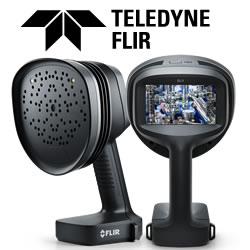Materials and method twinned for success – ceramic additive manufacturing
Ceramic Expos webinar last week continued the knowledge exchange and discussion on the principles of ceramic additive manufacturing (AM).
Ceramic Expos webinar last week continued the knowledge exchange and discussion on the principles of ceramic additive manufacturing (AM). People tuned in to hear speakers from XJET, the University of Louisville and Boston Ceramics discuss how to adapt the additive manufacturing design process for ceramics.
Technical ceramics have increasingly been used for thousands of engineering components - often replacing metals and plastics - due to the very special combination of properties such as high density and hardness, excellent wear resistance, superior frictional behavior, high fracture toughness, resistance to thermal shock, low thermal conductivity, low coefficient of thermal expansion, and bioinert state.
However, future prospects are ramped right up by the suite of tools offered by additive manufacturing (3D printing) technologies. Early systems experimented with conventional ceramic components, but since then AM adopters have not only successfully worked with highly complex ceramic geometries but have seen broadening possibilities for the use of related products such as metal-ceramic and polymer-ceramic composites and CMCs.
It has quickly become clear that, notwithstanding the challenges presented by potential shape, shrinkage and sintering problems - several end user industries are making the conscious decision to incorporate AM much more widely into their future manufacturing strategies. We can include in this group aerospace, medical/biomedical, automotive, electronics, construction, energy, marine and precision engineering.
The great pay-off here is that AM gives design engineers the opportunity to come up with new products and shapes - truly novel solutions for a host of applications - and with the iterative process opened up, they can do so rapidly as well. At the same time, users are guaranteed the superior mechanical, chemical and thermal properties offered by technical ceramics.
By comparison with other forming techniques - injection molding, dry pressing, plastic forming, pressure casting, extrusion, isostatic pressing - ceramic AM is certainly still in its infancy, albeit acknowledged to be growing at a fast rate. It seems, moreover, to be a highly adaptable technology and well suited to the agile manufacturing environment.
The extent of the potential is revealed if we take just a cursory glance at one industry. Let us consider healthcare for instance. Looking at possible product areas, we can predict some involvement for ceramic AM in dental implants (the largest application of medical ceramics), vertebrae spacers and extensors, neuroprosthetics (ear implants, for instance), femoral head implants and other bioceramics, scaffolds, pacemakers, dialysis machines, respirators, CAT scans, laser surgery, cardiology components, tools such as surgical saws, filters and pumps, pressure sensors, valves, labware, X-ray tubes and much more besides. If we extend this thinking across the other manufacturing industries adopting ceramic AM - and these are just the ones we know about today - then we can understand why a growth spurt is likely.
The commercial impact of all this cannot be underestimated. In its second, updated report on the global ceramic AM market (published just two months ago), SmarTech Publishing has employed the full gamut of analyses - supported with hardware and material market shipments, sales, installations, and future forecasts - to provide a fully comprehensive insight into the future of this sector. Its headline conclusion is that ceramics AM will have an overall market value (including applications) of $3.678 billion by 2028.
Ceramics Expo 2019 already promises to feature some of the world-leaders in ceramic AM named in the SmarTech report, and has dedicated a conference session to examining advances in additive manufacturing techniques and materials.
Featured Product

FLIR Si1-LD - Industrial Acoustic Imaging Camera for Compressed Air Leak Detection
The FLIR Si1-LD is an easy-to-use acoustic imaging camera for locating and quantifying pressurized leaks in compressed air systems. This lightweight, one-handed camera is designed to help maintenance, manufacturing, and engineering professionals identify air leaks faster than with traditional methods. Built with a carefully constructed array of MEMS microphones for high sensitivity, the Si1-LD produces a precise acoustic image that visually displays ultrasonic information, even in loud, industrial environments. The acoustic image is overlaid in real time on a digital image, allowing you to accurately pinpoint the source of the sound, with onboard analytics which quantify the losses being incurred. The Si1-LD features a plugin that enables you to import acoustic images to FLIR Thermal Studio suite for offline editing, analysis, and advanced report creation. Field analysis and reporting can also be done using the FLIR Acoustic Camera Viewer cloud service. Transferring of images can be managed via memory stick or USB data cable. Through a regular maintenance routine, the FLIR Si1-LD can help facilities reduce their environmental impact and save money on utility bills.
